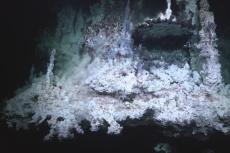Increases in California harbor porpoise population due to gillnet ban
Here are more good news to start off 2021 on a positive note: The population of California harbor porpoises has rebounded since the prohibition of state set-gillnet fisheries more than a decade ago.
Before they were closed down, these fisheries would cause the deaths of many harbor porpoises, as they ended up as bycatch in the fisheries' gillnets. And based on the numbers, it is apparent that such coastal set gillnets had taken a greater toll on the harbor porpoises than we realized.
This is the finding of a paper published in the Marine Mammal Science journal.
In the 1970s and 1980s, three of the four populations—the Morro Bay, Monterey Bay and San Francisco‐Russian River populations—were extensively affected by the gillnet fishing activities close to the shore where the harbor porpoises were commonly found, resulting in the latter ending up as bycatch.
The fourth population—Northern California‐Southern Oregon—had not been affected by gillnet fishing.
The findings were based on two sets of systematic, aerial line‐transect surveys conducted off California during summer/fall of 1986 to 2017. It showed that coastal set gillnets had taken a higher toll on the harbor porpoises than we previously thought.
After most gillnets in Morro Bay were shut down in 2001 (with a permanent ban in 2002), the population there increased nearly 10 percent a year. In 1991, it numbered about 570 animals. In the last few years, the population was estimated at approximately 4,200 porpoises, a roughly seven-fold increase.
The growth of the Monterey Bay population was faster after the ban, though not as fast as the one at Morro Bay. The most recent count was 3,760. The San Francisco‐Russian River population was at 7,777.
“This is very good evidence that if we can eliminate the deaths in fishing nets, marine mammal populations can come back in a big way,” said Karin Forney, a research biologist with NOAA Fisheries’ Southwest Fisheries Science Center who is based in Monterey Bay.















































